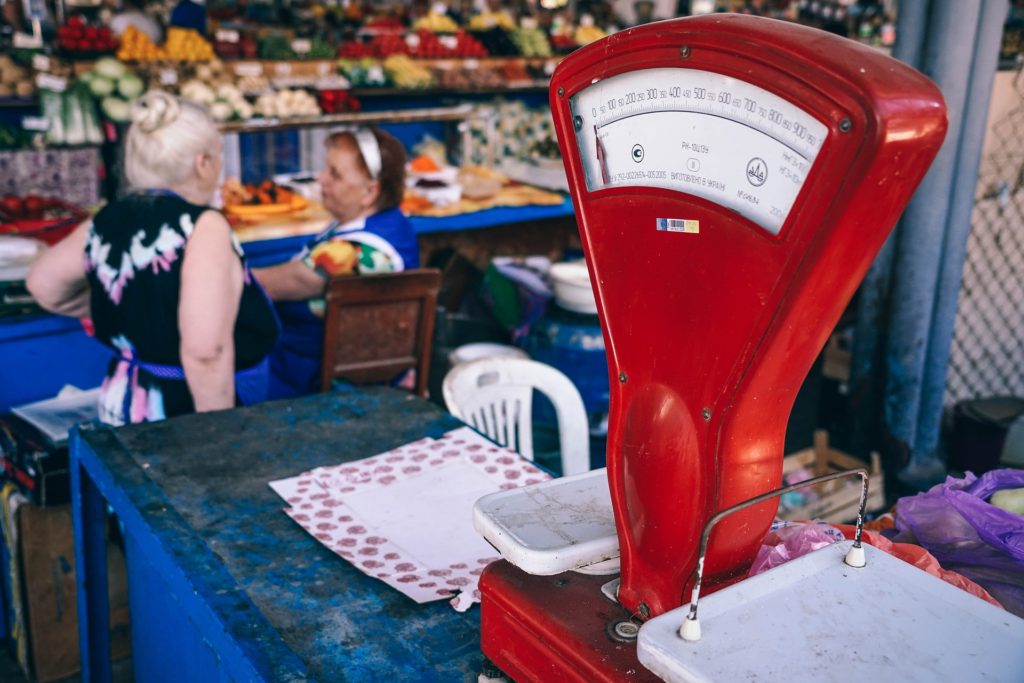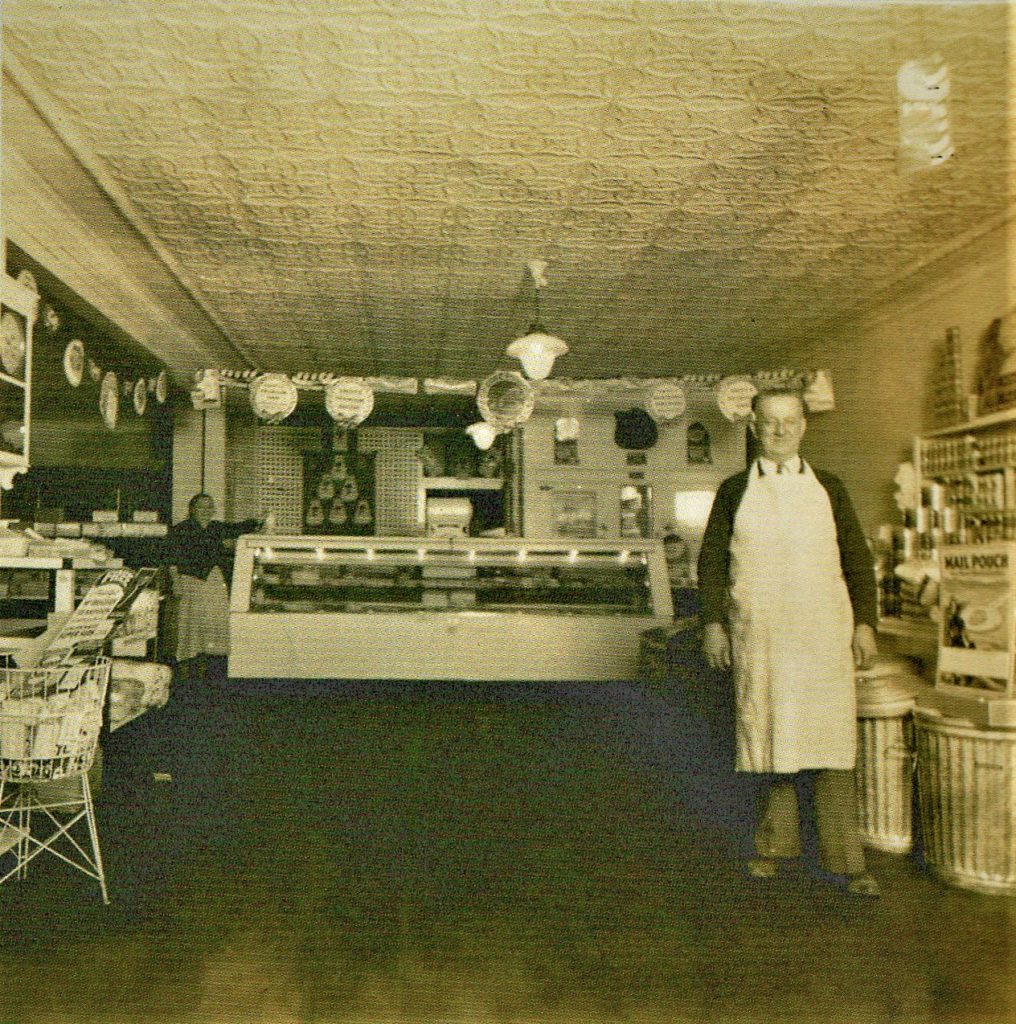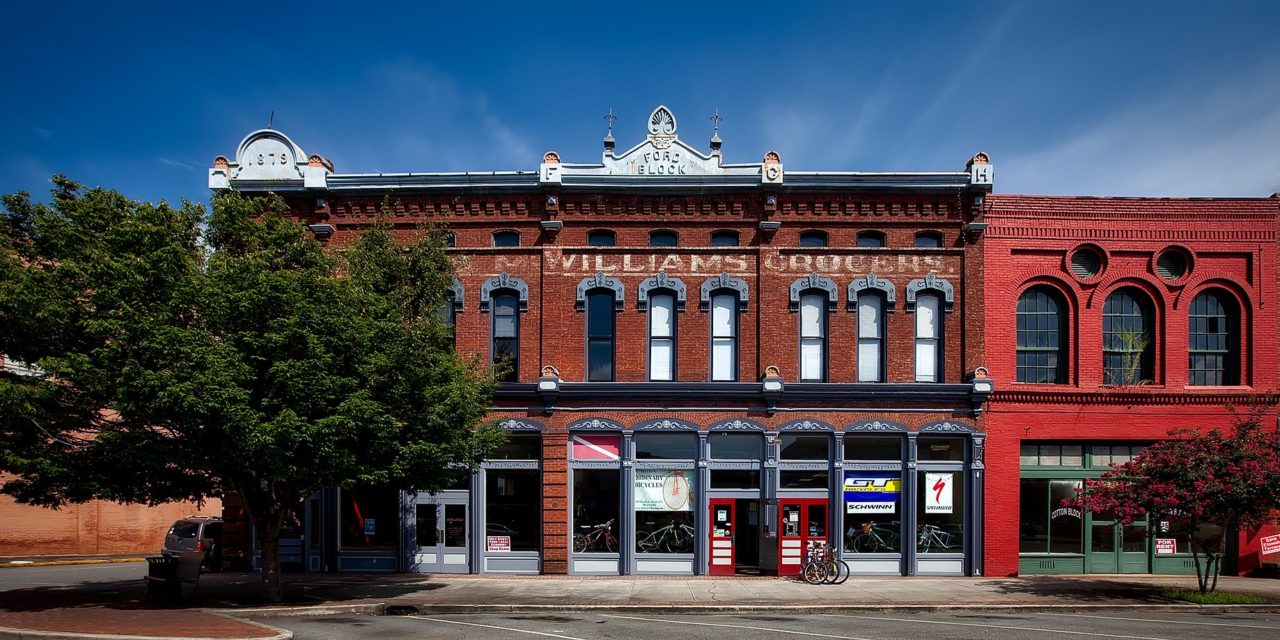Retail shops are re-opening around the country. I am grateful to have these brick and mortar stores in my neighborhood. I hope they can stand up to both Amazon and the new coronavirus. These establishments are vital to the life of a community.
My grandparents owned and operated a small grocery store in Adena, Ohio. It had a legal name. I am not one hundred percent sure what that name was. To all of us in the family, it was known simply as “the store.” That small shop became the centerpiece of my childhood, the crown jewel of my youth.
A short path linked the side-door of the store to the kitchen door of my grandmother’s home, the hub of her household. Hearing the store’s screen door slam indicated that a relative or neighbor was on their way for a visit. That sound was sure to grab our attention. Not many people visited the house. There wasn’t much need when so much visiting went on inside the store.
 It was at the store that I came to know the members of my community. It is where I heard their many languages and became familiar with their enchanting immigrant accents. I learned their stories and overheard many of their problems—a sick child, a drinking husband, unemployment, and “C-A,” known to us now as cancer. Shoppers sought out the ingredients for their special recipes, a rich menu of native foods. There was no need for formalized diversity training. It happened naturally at the store.
It was at the store that I came to know the members of my community. It is where I heard their many languages and became familiar with their enchanting immigrant accents. I learned their stories and overheard many of their problems—a sick child, a drinking husband, unemployment, and “C-A,” known to us now as cancer. Shoppers sought out the ingredients for their special recipes, a rich menu of native foods. There was no need for formalized diversity training. It happened naturally at the store.
My Aunt Phoebe, oldest of my grandparents’ children, ran the grocery business throughout my youth. She had a gift for languages and was skilled at rapidly switching tongues. Even though I knew these people came from many different countries, because of Phoebe’s skill, I thought there were only two universal languages, English and Polish. Never mind the fact that my grandparents came from Lebanon and I heard my grandmother speak Arabic in our home.
For the most part, people came to the store on foot. It was a time when many women did not drive and families had few cars. The large majority of shoppers were adult females. Though post-war advertisers targeted women with the goal of turning them into buying machines, even from my child’s eye-view, I could see why women loved to shop. It got them out of the house and into communion with others. It was a break from the daily grind. They got some exercise and some time to themselves on the walk to and from the store. They were reminded that they were not alone. These women spent a few dollars and shed a few worries. They left the store with some fresh hope in a brown paper bag.
The women all seemed old to me in their long skirts and sturdy shoes. They were unembarrassed by graying hair that they sometimes covered with babushkas– not out of vanity but because of weather or custom. They smelled of garlic and spices. They did not visit salons for manicures. Their nails were shaped and worn from work and colored from the earth’s soil, coal dust, or simmering red beets. I was taught that all of these were signs of women worthy of my respect.
It was at the store where I learned to work: bagging groceries, dusting, and stocking shelves. I learned how to read the wholesale catalog to determine suggested retail prices. We used an ink stamper to price each individual item. There were no computer codes or scanners. My fingertips became black from the ink as I turned sharp, tiny dials to change prices.

I learned about commerce as delivery drivers arrived with trays of Wonder bread, cartons of canned goods, and Sugardale meats. There was a walk-in refrigerator where sides of beef hung from a hook. My aunts or the butcher stepped inside to cut the meat fresh and exactly as ordered. I realized where meat came from and saw how hamburger was made. I witnessed the dangers of knives and grinders even in the skilled hands of adults. The meat was weighed on a white metal scale, wrapped in butcher paper, and tied with string pulled from a large bolt that hung from the ceiling. No foam trays or pre-packaged products.
Unlike produce departments of today, our produce section was small. While shoppers came from all over the world, our products did not. The fruits and vegetables were locally grown or trucked in from a nearby wholesaler, but it was all limited and seasonal.
Much more like today, there was a small rack near the checkout that contained candy and chewing gum. My favorite candy was Mallo Cups, a milk chocolate candy with a whipped, creamy, coconut-flavored filling. I also loved sour orange gum. Between smokes in the back room, my Aunt Phoebe chewed on Black Jack, the licorice-flavored gum she preferred. Sometimes I liked to join her in the back room and chomp my sour orange gum while Phoebe smoked a cigarette and threw chunks of coal into the furnace.
There was a single checkout lane and cash register, a handful of grocery carts. I learned the check-out procedures and how to ring up a sale. We punched each digit into the round black cash register keys and learned how to count back change. Before credit and debit cards, customers had accounts. There was a little book for each customer. We would keep track of the dates of purchase, the amount, and the growing total or payments. There were no collection services. My grandmother and aunts were well-known for looking away when someone could not afford to pay.

I had the opportunity to learn where and how people lived as I helped to carry or deliver groceries to their homes. Sometimes we would be sent on secret missions to deliver anonymous bags of groceries to the front porches of neighbors in need.
Though the stored closed early in the evening, about dinner time, it was 24-hour service for the family. If we needed something, we ran over to the store to get it. I remember the strange feeling of entering the dark, quiet store during off hours – it was like visiting a corpse compared to the light and liveliness of business hours.
Later, after we moved to our new home in Pittsburgh, we would visit my grandmother’s house, usually on Sundays when the store was officially closed, but there was always a trip to the store as our send off. Our family was sent over to the store to stock up on groceries which we carted back to the suburbs in our crowded station wagon, our hearts as overflowing as the car.
Even as a young adult, I returned to my grandmother’s house and to the store as often as I could. The store was small by today’s standards. Many gas station convenience stores have similar square footage. Had we been forced to social distance, we might have been able to have four of five shoppers in the store at one time. It was small, but the store was the world to me. I could always find someone I loved and someone who loved me. It was in the store that I joined in the work of my family and the life of my community. I could hang out or help out. No Ivy League education could have been finer.
Things are not always what they seem. Our family store was humble in appearance, but inside my uneducated, but gifted Aunt Phoebe was a kind, compassionate, self-taught, multilingual philanthropist to her community. She proved to be a savvy businesswoman and investor studying the stock market reports each evening in the daily newspaper. When Aunt Phoebe died, she left a legacy of generosity to her community and a small fortune to be shared by her many siblings.
The family business is long gone. If I were able to see it one more time, I would genuflect upon entering. It was at the store that I learned work can be a prayer and a shop can be a place of devotion. It is where I learned how to love my neighbor and when to pass the basket. In the check-out lane of The Store, I learned that I was blessed.

George and Elizabeth Bedway at Bedways Market






